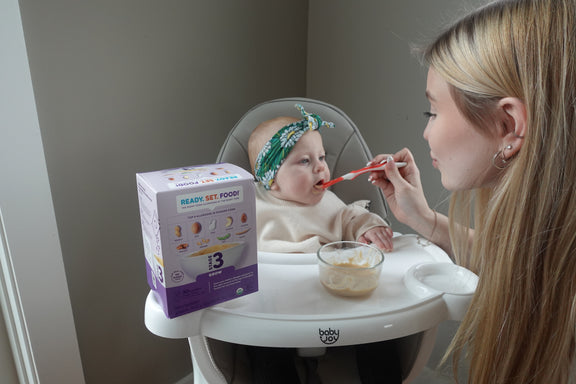Learn tips and tricks for overcoming bottle refusal to help your baby become familiar with the bottle.
Despite their similar appearance artificial nipples and human ones operate differently. Bottle introduction can be done at any time in the first 2-4 weeks of your child's life. Having a baby that will bottle feed is helpful for a variety of circumstances.
Why would I want to bottle feed my child?
Bottle feeding adds convenience to your routine. You can provide your child with breast milk without the restrictions of breastfeeding. Having a bottle handy is necessary for babies who need formula or supplements.
If your baby does not latch after your first few attempts do not give up hope. Consistency is the most effective way of getting your child to nurse. Relax, plan to spend some extra time, and let your baby get familiar with their bottle. Your baby's nursing preferences can be as unique as them. Learning how to bottle feed can be an opportunity to deepen your bond with your child.
Here are our top 6 tips for overcoming bottle refusal
1. Find out why they aren’t taking the bottle.
This one may seem obvious, but examining your baby’s breastfeeding routine is the first step. Your baby may prefer the comfort of your breastfeeding routine when bottle feeding. Or they may not latch knowing a breast is nearby. With this as a baseline, you can determine what your baby doesn't like about bottle feeding. The next tips are useful for pinpointing what combination your baby prefers.
Tip: Keeping the same skin to skin contact when bottle-feeding can ease your child.
2. Make the milk great.
Bottle milk can come from breast milk or formula. When introducing a breastfed baby to the bottle they may prefer breast milk due to its familiarity. Some infants may only drink from a bottle containing formula. These babies only associate formula with the bottle, and breast milk with breasts. No matter the type of milk body temperature is best. Warming the bottle nipple under warm water can add to the bottle's appeal.
Tip: Bottle-feed your baby when they are hungry around normal feeding times. Don't wait until they are very hungry or they may be too cranky and distracted to try something new.
3. Change feeder/location.
As mentioned above, some babies may not accept the bottle if they know their mom is on standby. Having someone different bottle feed the infant can help them to try something new. If the baby can see or smell you they may still resist the bottle. Getting your baby to latch may even require the mother to leave the house.
If this is not possible you can experiment with a change in location or positioning. Bottle feeding offers more variety in positioning for your infant. Cradling them in a different arm or nursing while seated are effective alterations.
Tip: If you are bottle feeding in a new or familiar place make sure it is quiet with few distractions.
4. Try a different bottle.
Bottles’ nipples are altogether different from that of a human. The muscles of the infant's mouth work differently when nursing from a breast than a bottle. Some bottle nipples are rigid, others made with soft rubber. Your baby’s preference may be down to the mouthfeel of the bottle. It may take some experimenting to find a bottle nipple that is comfortable and appealing. We recommend this list of bottles: 10 Best Bottles of 2020 for picky babies.
Trying different bottles may be your first instinct when your baby refuses to nurse. It is a good option when you have exhausted all other strategies. Before buying a new bottle play with your feeding technique.
Never force a new bottle into the mouth of a baby. Instead, let the tip of the nipple brush gently against their mouth. Babies have a natural instinct to latch on to their mother's nipple. Having a bottle presented to them in a similar way can also spark interest.
Tip: Experiment with the flow of milk, always starting slowly. Some babies get frustrated by slow milk and others can not keep up with a fast stream.
5. Dream Feeding.
Dream feeding is when you bottle-feed or breastfeed your baby when they are asleep and could be an option to overcoming bottle refusal. Your baby may take the bottle more easily when they are sleepy or already asleep.
Tip: Try offering the bottle when your baby is starting to fall asleep or near the end of a nap.
6. Patience.
Finding the right balance is key to bottle feeding a fussy infant. Your first child may prefer being fed over your shoulder while pacing the kitchen. Your second may cling to the comfort of their nursery but need someone new to accept a bottle. No child is exactly the same and the process takes time. It may mean attempting bottle-feeding every day.
Consistency and flexibility are important when determining your baby’s preferences. Being able to bottle feed is an incomparable convenience. It's worth your time to create a positive relationship between baby and bottle.
Despite its apparent simplicity bottle feeding is an art that develops with practice and creativity. We hope these tips help you and your baby in your bottle feeding journey. For more information, check out CDC recommended strategies for Feeding From a Bottle | Nutrition
Bottle-Feeding and Early Allergen Introduction
New guidelines recommend introducing allergens such as peanut, egg, and milk. It’s also recommended to being early allergen introduction as early as 4-6 months (or during baby’s critical immune window). However, if your baby is not ready for solid foods, Ready. Set. Food! offers a solution for introducing peanut, egg, and milk at 4-6 months through our innovative bottle introduction system. Ready. Set. Food! stick packs easily dissolve into your baby’s bottle of breastmilk or formula (or favorite puree) to follow AAP guidelines.

The Window Of Opportunity For Introducing Peanut: New Study Findings From the LEAP and EAT Trials
Results from the landmark LEAP and EAT studies have shown that intr...

Best Finger Foods For Babies (And When To Start Finger Foods)
When to move beyond the spoon and start baby's journey with finger ...

6 Reasons Why You Should Introduce Allergens
Landmark studies and medical guidelines recommend that you introduc...

7 Ways to Feed Your Toddler More Iron
Iron is an essential mineral for your toddler’s brain health and ov...

How To Know If My Toddler Is Getting Enough Protein?
Protein supports your toddler’s growth, helps build strong bones an...

How Much Milk Should Your Toddler Drink?
How much milk should your toddler drink in a day? Find out the reco...
All health-related content on this website is for informational purposes only and does not create a doctor-patient relationship. Always seek the advice of your own pediatrician in connection with any questions regarding your baby’s health.
These statements have not been evaluated by the Food and Drug Administration. Products are not intended to diagnose, treat, cure or prevent any disease. If your infant has severe eczema, check with your infant’s healthcare provider before feeding foods containing ground peanuts.







